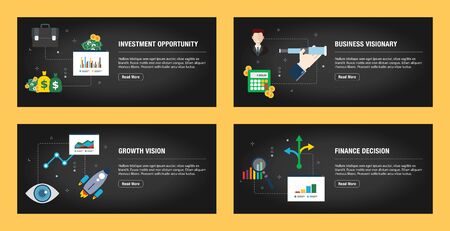Understanding ROI in the CRM Context
When it comes to investing in a Customer Relationship Management (CRM) system, the term “ROI”—or Return on Investment—takes center stage. But what does ROI really mean for businesses using CRM tools, and why is it so important?
What is ROI in the CRM World?
In simple terms, ROI measures the value your business gains compared to what you spend. For CRM systems, this means weighing the benefits you get from improved sales, better customer relationships, and streamlined processes against the costs of software subscriptions, training, and setup.
Why Does ROI Matter with CRM Systems?
Understanding your ROI helps answer two crucial questions:
- Is the money spent on the CRM system worth it?
- How can you prove the CRM’s impact to your team or leadership?
Tracking ROI isn’t just about numbers—it’s about making sure your CRM helps you reach business goals like higher revenue, happier customers, and efficient operations.
Common CRM Investments vs. Potential Returns
| CRM Investment | Potential Returns |
|---|---|
| Subscription Fees | Increased Sales Revenue |
| Employee Training | Faster Response Times |
| System Customization | Better Customer Retention |
| Integration Costs | Smoother Workflows |
The Role of ROI in Business Decisions
A clear understanding of ROI allows you to:
- Make smarter choices when picking or upgrading a CRM.
- Justify spending to stakeholders by showing real results.
- Focus on metrics that matter most for your business success.
2. Essential CRM Metrics for Boosting ROI
When it comes to maximizing ROI with your CRM system, tracking the right metrics is key. Let’s break down the most important ones you should focus on. By keeping an eye on these numbers, you’ll be able to spot trends, adjust your strategy, and make smarter business decisions.
Customer Acquisition Cost (CAC)
Customer Acquisition Cost tells you how much you’re spending to win a new customer. This metric includes all your sales and marketing expenses divided by the number of customers acquired in a specific period. Lowering your CAC means you’re getting more value from every dollar spent.
How to Calculate CAC
| Total Sales & Marketing Costs | ÷ | Number of New Customers Acquired | = | CAC |
|---|---|---|---|---|
| $10,000 | ÷ | 50 | = | $200 per customer |
Your CRM can track marketing spend and new leads automatically, making it easier to see where your money goes and which channels perform best.
Customer Lifetime Value (CLV or LTV)
Customer Lifetime Value measures the total revenue you expect from a customer during their relationship with your business. The higher the CLV, the more profitable each customer is over time. This metric helps you decide how much you can afford to spend on acquisition and retention efforts.
How to Calculate CLV
| Average Purchase Value | x | Purchase Frequency Rate | x | Customer Lifespan (in years) | = | CLV |
|---|---|---|---|---|---|---|
| $100 | x | 5 times/year | x | 3 years | = | $1,500 |
A good CRM will help you track purchase history and engagement, so you can identify high-value customers and tailor your approach accordingly.
Sales Cycle Length
Sales Cycle Length is the average time it takes to turn a lead into a paying customer. Shorter cycles mean faster revenue and less resource drain. Tracking this metric helps you pinpoint bottlenecks in your process and find ways to speed things up.
Example Sales Cycle Length Calculation:
| Total Number of Days to Close All Deals in Period | ÷ | Total Number of Deals Closed | = | Average Sales Cycle Length (days) |
|---|---|---|---|---|
| 600 days (total for 10 deals) | ÷ | 10 deals | = | 60 days/deal average |
Your CRM lets you analyze each deal’s timeline so you can see exactly where prospects get stuck—and take action to move them along faster.
Bringing It All Together: Why These Metrics Matter for ROI
The real magic happens when you look at these metrics side by side. Here’s a quick overview:
| Metric Name | Main Benefit for ROI Tracking |
|---|---|
| CAC (Customer Acquisition Cost) | Tells if your marketing spend is efficient; lower CAC = higher ROI. |
| CLV (Customer Lifetime Value) | Shows long-term profit potential of each customer. |
| Sales Cycle Length | Helps identify process delays that hurt cash flow and growth. |
Your CRM brings all this data together in one place, making it easy for your team to stay focused on what really drives results.
![]()
3. Must-Have KPIs for CRM Success
To truly maximize ROI with your CRM system, tracking the right KPIs is essential. These actionable metrics not only measure how well your CRM is performing but also guide smarter business decisions. Let’s break down the must-have KPIs every business should monitor:
Conversion Rates
Conversion rate tells you what percentage of leads turn into paying customers. A higher conversion rate means your sales and marketing teams are doing a great job nurturing leads through the funnel. By tracking this KPI, you can spot bottlenecks in your process and identify which campaigns or reps are most effective.
| Stage | Number of Leads | Converted Customers | Conversion Rate (%) |
|---|---|---|---|
| Initial Contact | 500 | 50 | 10% |
| Qualified Leads | 200 | 40 | 20% |
| Total Pipeline | 700 | 90 | 12.8% |
Action Tip:
Regularly review conversion rates by stage to see where leads drop off and test new strategies to improve each step.
Deal Pipeline Velocity
This KPI measures how quickly deals move through your sales pipeline—from first contact to closing. Faster velocity often leads to more revenue in less time. Monitoring pipeline velocity helps you identify slow stages and coach your team to keep deals moving.
| Pipeline Stage | Average Days Spent | Target Days | Status |
|---|---|---|---|
| Initial Outreach | 5 | 4 | Slightly Slow |
| Needs Analysis | 7 | 6 | Slightly Slow |
| Proposal Sent | 3 | 5 | Ahead of Target |
| Total Cycle Time | 15 | 15 | On Track |
Action Tip:
If deals stall at certain stages, consider automating follow-ups or offering targeted incentives to move them forward.
Customer Retention Rates
Your customer retention rate shows how many clients stay with your business over time. Keeping existing customers is usually cheaper than finding new ones, making this KPI critical for long-term ROI. High retention rates often signal strong customer satisfaction and effective relationship management.
| Total Customers (Start) | Total Customers (End) | Customers Lost | Retention Rate (%) |
|---|---|---|---|
| 1,000 | 950 | 50 | 95% |
Action Tip:
If your retention rate drops, check in with customers to understand their needs and address any issues early on.
The Power of Tracking These KPIs Together:
A successful CRM strategy relies on monitoring all these KPIs together. When you track conversion rates, pipeline velocity, and retention rates side by side, you’ll gain a clear picture of what’s working—and where you need to pivot—to maximize your CRM’s impact on ROI.
4. Integrating Data for Actionable Insights
Why Data Integration Matters
Integrating your CRM data is crucial for making smarter business decisions and maximizing your ROI. When all your customer information, sales activities, and marketing efforts are connected in one place, you can quickly spot trends, identify opportunities, and solve problems before they grow.
Best Practices for Collecting CRM Data
- Centralize Data Entry: Make sure all teams enter customer information into the same CRM system to avoid duplicate or missing records.
- Automate Where Possible: Use automation tools to pull in data from web forms, emails, social media, and other channels automatically.
- Standardize Data Fields: Agree on common formats for key fields like phone numbers and addresses so reporting stays accurate.
- Regularly Clean Your Data: Set up routine checks to remove outdated or incorrect info that could skew your insights.
How to Integrate CRM Data Across Platforms
Your CRM should be able to connect with other tools your business uses—like email marketing software, e-commerce platforms, or support ticket systems. This way, you get a full view of every customer interaction. Here’s a simple look at what integrated data might include:
| Source | Data Collected | How It Helps |
|---|---|---|
| Email Marketing | Email opens, click rates | Shows which campaigns drive engagement |
| E-commerce Platform | Purchase history, cart abandonment | Identifies top products and churn risks |
| Customer Support | Tickets submitted, resolution time | Highlights service issues and satisfaction levels |
| Social Media | Mention volume, sentiment analysis | Tracks brand perception and hot topics |
Leveraging Real-Time Insights for Business Growth
The real power of an integrated CRM system comes from turning raw data into actionable insights. With dashboards and real-time reporting, you can:
- Spot Sales Opportunities: Instantly see which leads are most engaged and ready to buy.
- Monitor KPIs Live: Track important metrics like conversion rates or customer lifetime value as they happen.
- Personalize Outreach: Use behavioral data to send targeted messages that resonate with each customer.
- Pivot Strategies Quickly: If you notice a campaign isn’t working, use live feedback to adjust your approach fast.
The Bottom Line on Integrated CRM Data
The more connected your CRM data is—with clean inputs from all channels—the better equipped you’ll be to make informed decisions that boost ROI and help your business grow.
5. Leveraging CRM Analytics for Continuous Improvement
Unlocking the Power of Advanced CRM Analytics
One of the biggest advantages of a modern CRM system is its ability to gather and analyze massive amounts of data. With advanced analytics, businesses can go beyond simple data tracking and start finding patterns, trends, and actionable insights that drive better decision-making. Instead of relying on gut feelings or outdated reports, you get real-time feedback on what’s working—and what’s not.
Key Metrics and KPIs to Track
| KPI/Metric | What It Shows | Why It Matters for ROI |
|---|---|---|
| Lead Conversion Rate | Percentage of leads turning into customers | Higher rates mean your sales process is effective |
| Customer Lifetime Value (CLV) | Total revenue expected from a customer over time | Shows long-term impact of marketing and service efforts |
| Sales Cycle Length | Average time from lead to close | Shorter cycles free up resources and increase revenue potential |
| Churn Rate | How many customers stop buying or using your service | A lower churn rate means higher retention and recurring revenue |
| Average Deal Size | The average value of closed deals | Larger deal sizes boost overall ROI quickly |
How Regular Performance Reviews Make a Difference
Setting up your CRM with the right metrics is just the first step. The real game-changer comes when you review these numbers regularly—weekly, monthly, or quarterly. By analyzing performance reviews, your team can spot:
- Bottlenecks: Maybe leads are getting stuck in the pipeline or follow-ups are too slow.
- Opportunities: Notice which campaigns are bringing in high-value leads so you can invest more in what works.
- Inefficiencies: Identify where resources are wasted and shift focus to high-impact activities.
Continuous Improvement in Action
Let’s say your analytics reveal that most leads drop off after the initial email contact. This insight helps you tweak your follow-up strategy or improve your email content. Or perhaps your data shows that customers acquired through social media have a higher CLV—so you double down on social campaigns. By making small adjustments based on real data, you continually maximize ROI from your CRM investment.


